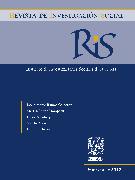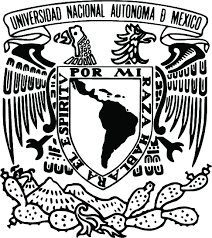Please use this identifier to cite or link to this item:
https://ru.iis.sociales.unam.mx/handle/IIS/5360| Title: | Topografía de las memorias: testimonio y Museo de Sitio del Archivo Provincial de la Memoria de Córdoba, Argentina |
| Authors: | Magrin, Natalia |
| Keywords: | terrorismo de Estado Centro Clandestino de Detencion Tortura y Exterminio sitio de memoria State terrorism Clandestine Detention Torture and Extermination Center memory site |
| Publisher: | Universidad Nacional Autónoma de México, Instituto de Investigaciones Sociales |
| Series/Report no.: | Revista de Investigación Social;Año IX, Número 15 |
| Issue Date: | 2012 |
| Abstract: | Durante los últimos diez años, en Argentina se incorpora a la discusión sobre las memorias, en torno al terrorismo de Estado, la creación de Sitios de Memoria en los lugares que funcionaron como Centros Clandestinos de Detención, Tortura y Exterminio (ccdtye). ¿Qué define la legitimidad para que un lugar sea convertido en Sitio de Memoria?, ¿qué hacer en ellos?, ¿cuál es la dimensión pública de los mismos?, ¿cómo conservar los espacios edilicios?, ¿quiénes participan de dichas construcciones?, ¿qué memorias los habitan? Este artículo intenta analizar la experiencia singular del Archivo Provincial de la Memoria, construido en el ex ccdtye donde funcionó, de 1974 a 1983, el Departamento de Informaciones de la Policía de la provincia de Córdoba, particularmente el entrecruzamiento entre materialidad física y testimonios de sobrevivientes, la “topografía de las memorias”. Las preguntas giran en torno a los sentidos que asume la dimensión topográfica en la producción de significaciones y la inscripción subjetiva de un saber en torno a los efectos de las situaciones límites (Pollak, 2006). Abstract: In the past ten years, Argentina has joined the discussion on memories, regarding state terrorism and the creation of Memory Sites in places that functioned as Clandestine Detention, Torture and Extermination Centers (ccdtye). What defines the legitimacy for a place to be turned into a place of remembrance? What should one do in them? What is the public dimension of the latter? How can one preserve urban spaces? Who is involved in these constructions? What memories inhabit them? This article seeks to analyze the unique experience of the Provincial Archives of Memory, built in the former CCDTyE, where the Police Information Department of the province of Córdoba operated from 1974 to 1983, particularly the intersection between physical materiality and testimonials of survivors, the “topography of memories”. The questions revolve around the meaning of the topographical dimension in the production of meanings and the subjective use of knowledge regarding the effects of extreme situations (Pollak, 2006). |
| URI: | https://ru.iis.sociales.unam.mx/handle/IIS/5360 |
| Type: | PeerReviewed Artículo |
| Rights: | https://creativecommons.org/licenses/by-nc-sa/4.0 |
| metadata.dcterms.bibliographicCitation: | Magrin, Natalia (2012). "Topografía de las memorias: testimonio y Museo de Sitio del Archivo Provincial de la Memoria de Córdoba, Argentina". Revista de Investigación Social 15 (invierno): 59-79. |
| Appears in Collections: | Revista de Investigación Social |
Files in This Item:
| File | Description | Size | Format | |
|---|---|---|---|---|
| 03_magrin.pdf | Artículo | 163.42 kB | Adobe PDF |  View/Open |
| ris15_portada.jpg | Portada | 303.6 kB | JPEG |  View/Open |
Items in DSpace are protected by copyright, with all rights reserved, unless otherwise indicated.
